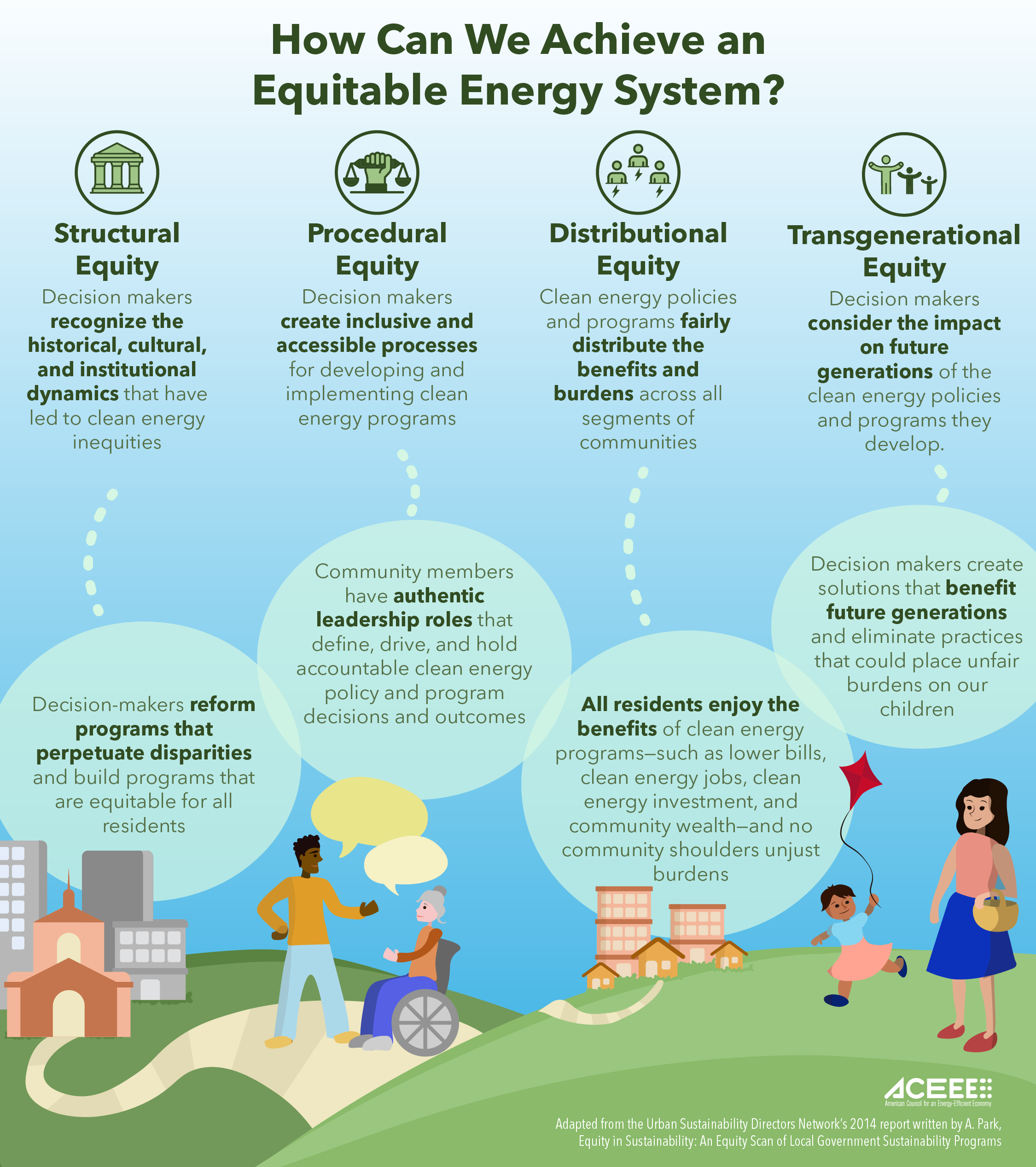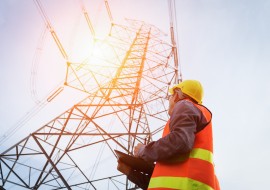Committing to equity in clean energy programs, policies, and investments can improve and expand clean energy services and technologies for marginalized groups while creating more just processes, outcomes, and systems. Many groups have historically been underserved by energy efficiency and clean energy programs, including Black communities, Indigenous communities, people of color, low-income individuals, youth, older adults, recently arrived immigrants, those with limited English proficiency, and people with disabilities.
Clean energy services can reduce energy costs, create jobs, and promote the health, safety, and well-being of residents. ACEEE research has found disproportionate energy burdens nationally, regionally, and across metro areas for certain groups, including low-income households, households of color, renters, and older adults.
Policymakers, utilities, and other decision makers can address these energy burden disparities through clean energy policies and programs. Approaches that address the four dimensions of energy equity—procedural, distributional, structural, and transgenerational—can improve decision-making, change how benefits and burdens are distributed, and address current barriers. Equitable energy policies often improve energy access and affordability, procedural justice, economic participation and community ownership, and health and environmental impacts. The Initiative for Energy Justice offers educational resources, including tools to examine and measure energy justice locally.
ACEEE’s Leading with Equity Initiative
In February 2021, ACEEE kicked off the Leading with Equity Initiative to convene community-based organizations, advocates, and utilities to jointly define success for equitable decarbonization, then embed what we learn across ACEEE’s research and policy outreach. We will work together to develop new policy, encourage necessary data collection, and foster collaboration to achieve more-equitable decarbonization. We will develop metrics for ACEEE’s city, state, utility, and state transportation electrification scorecards that capture progress toward equity-centered clean energy policies and program outcomes. We aim to ensure that frontline communities are represented and driving the development of our new metrics. To learn more about our efforts to improve our equity metrics for city, state, and utility decarbonization or share your recommendations, please complete this survey. We’ll keep you up to date on the initiative and ways to get involved.
Highlighted Resources:
For more information or to contact a researcher, please visit the Local Policy research program.







